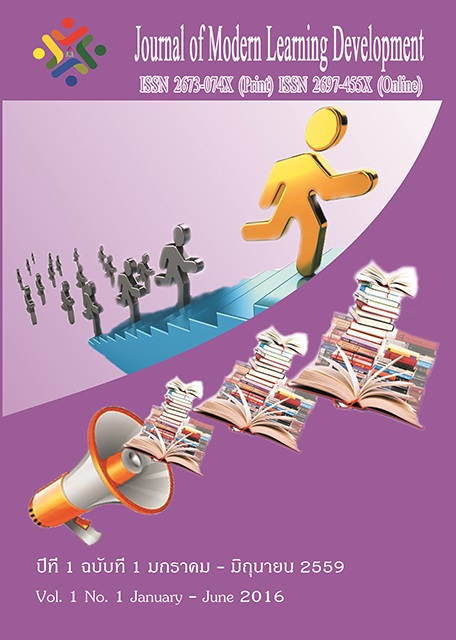Analyze The Political Ideology Of The Sukhothai Period And The Current Situation
Main Article Content
Abstract
The Sukhothai Kingdom in the early period was prosperous. In every aspect, especially in politics and administration, divided into 2 phases: 1, political administration, father-child rule Khun Khun Sri Indra Tit King Khun Bang King Ramkhamhaeng the Great He led the style of government Father ruled the child to use Have a close look between King and people Or called The father who closely supervises the child later, after the monarchy began to change Influenced by Some Khmer have been influenced by India and the status of the King changed to a new name. From No. 4 to 5, Phraya and No. 6-7-8-9 are Phra Maha Dhamma, therefore the form of government has changed to Dharma style. This form of government is a form that applies the principles. By bringing Buddhism as a bond in government and the monarchy Became more distant with the people of the Kingdom of Sukhothai Established in the year 1792, with Khun Khun Si Indrathit Was the first king of the Phra Ruang dynasty to rule the land of the early Sukhothai period (1792-1841). Father, father, son, or father, parent or child, patriarchal and late Sukhothai period (1841-1981) The father-son rule began to deteriorate. Because the monarchy does not have to keep the cities independent Phra Maha Dhamma, 1st, therefore preserving and promoting Buddhism, the characteristics of the late Sukhothai period, therefore, is the Dharma Racha style in the Sukhothai Kingdom. There is a relationship between countries and neighboring states such as Lanna Kingdom, Phayao, Nan, Nakhon Si Thammarat, Mon Kingdom, Ayutthaya Kingdom. And the far away state, such as Lanka, China, the society of the Sukhothai group, dividing people into 2 groups: the ruling class and the ruling class As for the economy of Sukhothai Depends on agriculture Commerce And handicrafts Making chinaware Sukhothai society is a class society. Which includes King People and slaves
Article Details
References
ขจร สุขพานิช. (2521). ประวัติศาสตร์ พ.ศ. 1600 - 2310. กรุงเทพมหานคร: ปริ้นบุคล์.
เขลา ถาวรธนดำรง. (2535). พื้นฐานวัฒนธรรมไทย. กรุงเทพมหานคร: มาย์บุคล์.
ชาญวิทย์ เกษตรศิริ.(2549).ประวัติการเมืองไทย. (พิมพ์ครั้งที่ 4). กรุงเทพมหานคร: มูลนิธิโครงการตำราสังคมศาสตร์และมนุษยศาสตร์.
ปภาวดี ดุลยจินดา. (2545). หลักการทั่วไปเกี่ยวกับการบริหารราชการ เอกสารประกอบการสอนวิชา การ บริหารราชการไทย หน่วยที่ 1-8. (พิมพ์ครั้งที่ 20). นนทบุรี : มหาวิทยาลัยสุโขทัยธรรมมาธิราช.
ไพฑูรย์ สายสว่าง. (2518). พื้นฐานทางเศรษฐกิจของอาณาจักรสุโขทัย. กรุงเทพมหานคร:คณะโบราณคดี มหาวิทลัยศิลปากร.
ลิขิต ธีรเวคิน. (2546). วิวัฒนาการการเมืองการปกครองของไทย. (พิมครั้งที่9). กรุงเทพมหา นคร: สำนักพิมมหาวิทยาลัยธรรมศาสตร์.
วิไลสงวน โชติสุขรัตน์. (2540). ตำนานเมืองสยาม. กรุงเทพมหานคร: สายทองพิมพ์.
ศรีศักดิ์ วัลลีโภดม (2517). สภาพภูมิศาสตร์และประชาการของอาณาจักรสุโขทัยสมสมัย ศรีศูทรพรรณโฉมหน้าศักดอนาไทย.กรุงเทพมหานคร: บพิธ
ศรีศักดิ์ วัลลีโภดม. (2549). สภาพภูมิศาสตร์และประชาการของอาณาจักรสุโขทัย.กรุงเทพมหานคร: ศูนย์มานุษยวิทยาสิรินธร.


